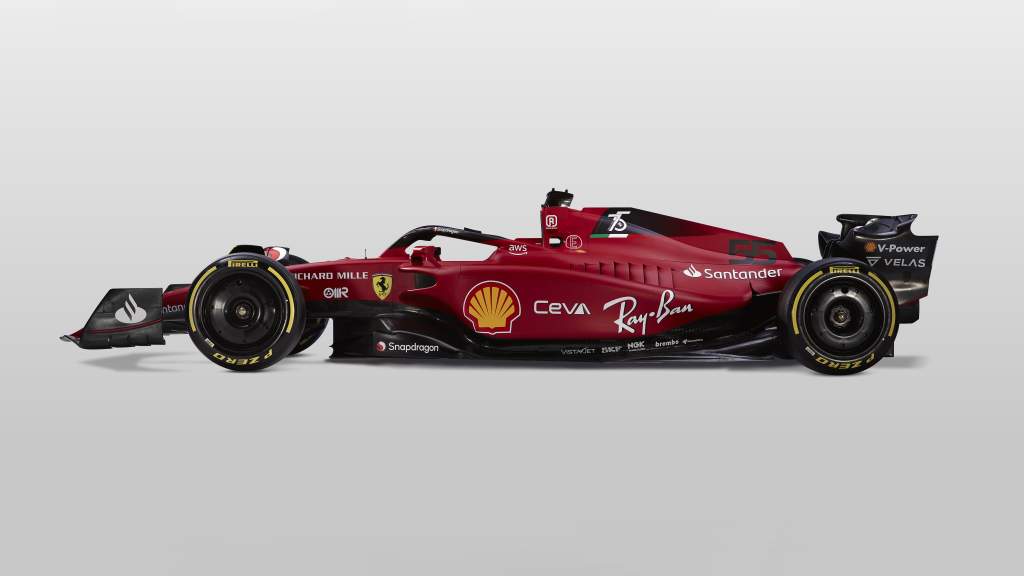Up Next

The first of Formula 1’s big-hitters – or at least what should be one of the big hitters – has revealed its 2022 car for public scrutiny. That means that if it’s going to achieve its objectives, the Ferrari F1-75 should be the most eyecatching car we’ve seen so far.
Before getting onto the car, I would like to say how impressed I was with the reveal. Ferrari used team principal Mattia Binotto and drivers Charles Leclerc and Carlos Sainz, which shows it doesn’t believe there’s any need to bring in presenter superstars from the outside world. Ferrari has its own superstars and is proud of them.
All the unusual caveats apply as I don’t expect this will be the final version of the car that turns up for the Bahrain Grand Prix, or even for the first day of pre-season testing at Barcelona next week. But what is clear is that Ferrari has headed down a different avenue to the rest. The key question is whether that avenue leads to where it wants to get to.
NOSE/FRONT WING
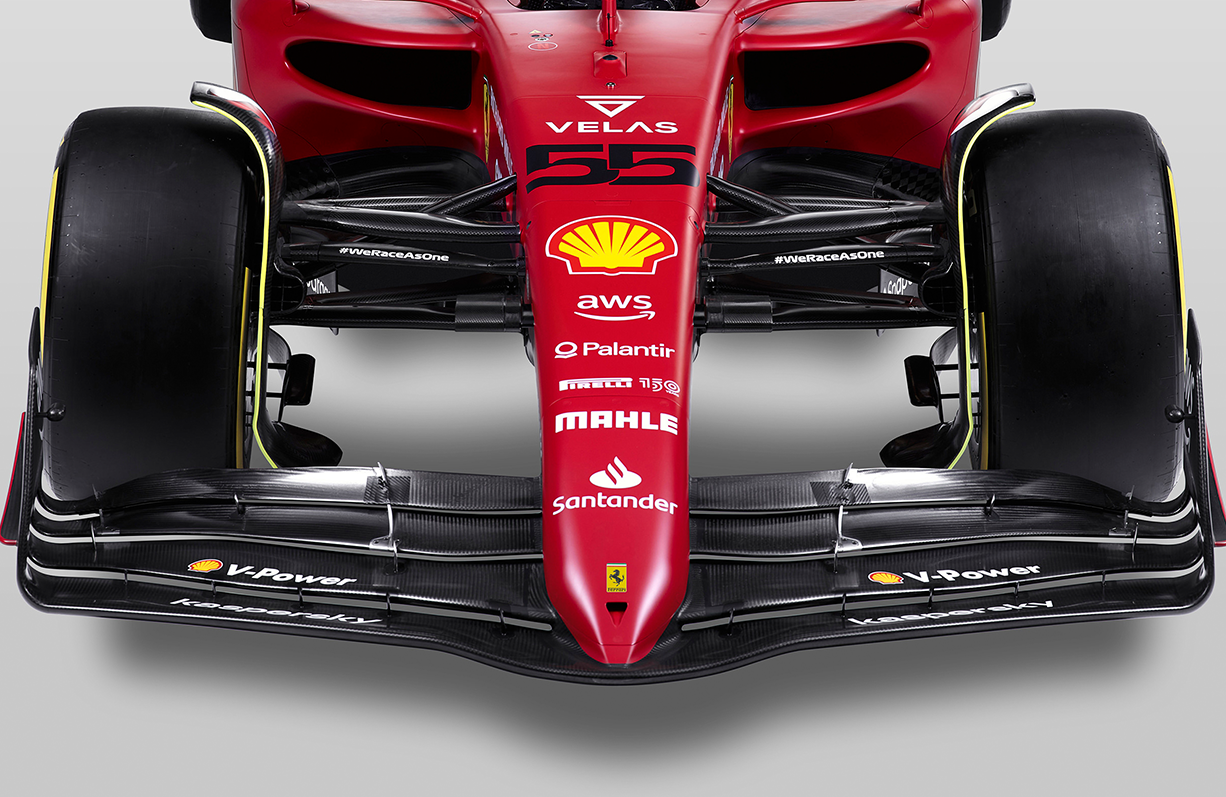
This is very different from the Aston Martin or the McLaren approach, both of which have a continuous slot gap between the first and second elements. Ferrari does not.
To reduce the area of stagnation where the airflow hits the front of the nose and doesn’t know where to go, Ferrari has gone for a pointy design. The front element has a large spoon section in the middle, which is quite wide and also lower.
This is about trying to make this spoon area work to produce front downforce. The front two elements mount the front wing to the nose and the third and fourth elements run into the sides of the nose.
The whole concept is quite heavily loaded inboard with the outer sections of all of the elements dropping off fairly quickly to connect up to the lower edge of the front wing endplate. As required by the regulations, each of the elements and slot gaps curve into the lower part of the endplates.
The endplates have the customary ski ramp on the outer surface. This helps with managing the tyre squirt and the negative effect that could have on the performance of the front wing.
It is only the outer two thirds of the fourth element that appears to be adjustable; even the last short section before it that connects to the endplates is fixed. Normally with a highly-loaded inboard section, if you vary the angle of the inner section of the fourth element it has a detrimental effect on the airflow further downstream. So Ferrari might just be boxed in that little bit with how much front downforce it can produce.
WING MOUNTING

The nose is a bit more like the Williams in that the top surface has more curvature than some of the others.
This will allow the airflow going over that area to go around the sides of the nose more easily. It has the now-common raised undersurface. The cross-section at the front of the front tyres is probably as small as possible while still being able to pass the mandatory frontal crash test.
FRONT SUSPENSION
Despite rumours to the contrary, Ferrari has gone for a pushrod system for the front suspension That means McLaren still stands alone in using a front pullrod system.
Ferrari has a conventional top-and-bottom wishbone layout, with the bottom wishbone driving the pushrod and the inner end of the pushrod driving the inboard suspension components.
It looks like it has a small amount of anti-dive on the top wishbone. This could simply be to prevent the car diving too much under braking, or it could be to give more control over the wake coming off the trailing edge of the front wing.
The wing wake and the wishbone location are quite important to each other, so they work hand in hand. You can see from the top wishbone forward leg how it twists from the inboard section going outboard. This is in line with the requirements of the front wing trailing edge wake.
FRONT BRAKE DUCTS
The brake-duct inlets themselves are quite small, but the sizing will be optimised to suit the larger-diameter discs as the teams build circuit knowledge.
The inner face sweeps upwardly into the mudguard, much like everyone else’s. The lower part of the face sweeps very neatly into a three-dimensional, near-horizontal vane that is in that position to contain what is called the tyre squirt.
This is the airflow that is displaced when the tyre rotates on the track surface. This can very easily be pulled into the low pressure area underneath the car, reducing downforce.
The fairing is to try to connect the tyre squirt to the low pressure behind the front tyre as it rotates away from the track surface.
BARGEBOARD-REPLACEMENT TURNING VANE
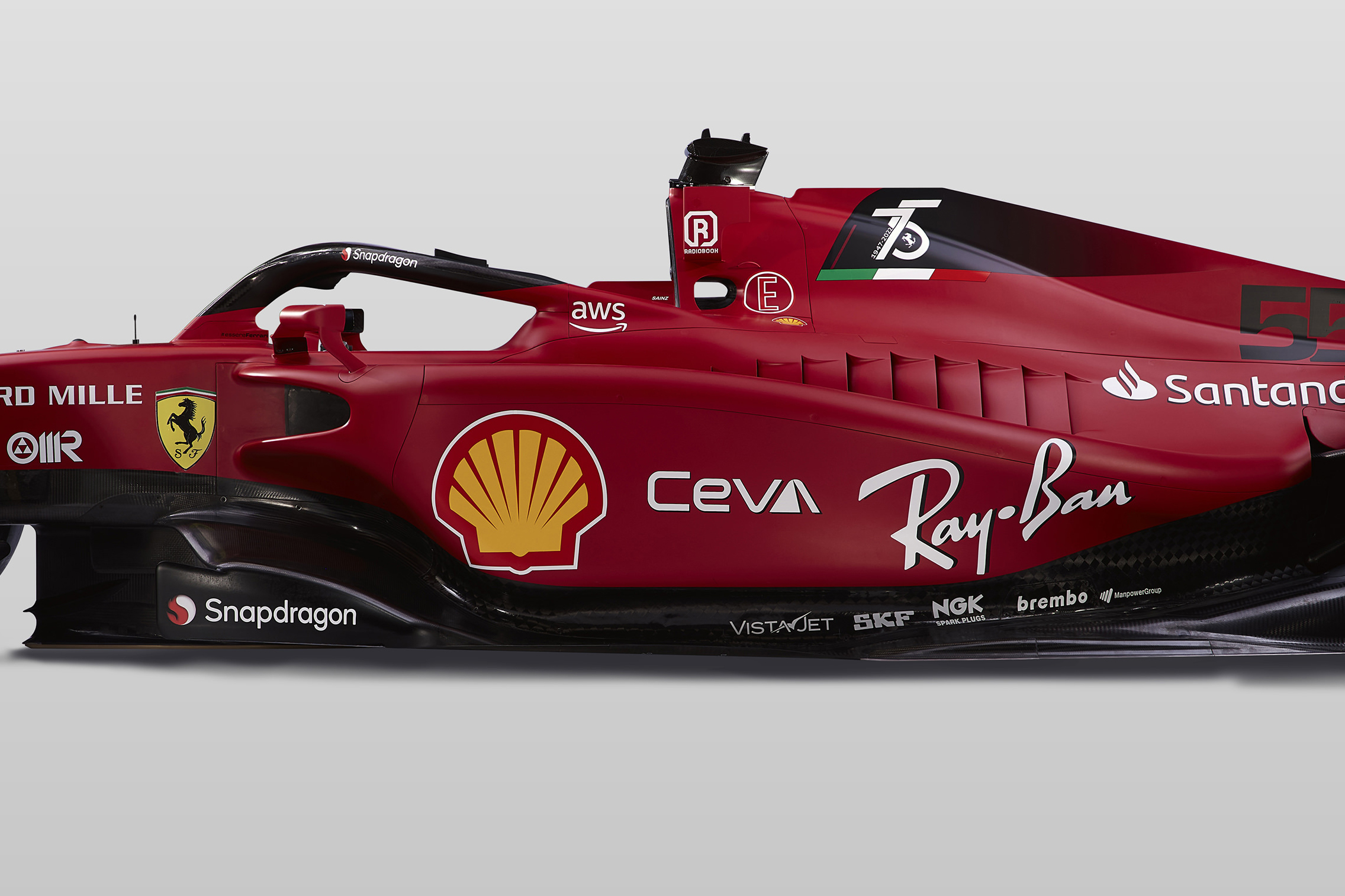
It’s very difficult to see this in detail from the pictures that have been released. It looks like Ferrari has the full-length outboard vane and it’s also likely to have the two inner vanes.
The outboard vane is there to separate the turbulent wake coming off the rear of the front tyre and assist it in passing along the outside surface of the sidepod.
Ferrari also has a secondary dive-plane mounted forward on the chassis-to-floor mounting keel. The outer trailing corner of this will set up a strong vortex to pass along the inner corner of the inner side and top surface of the underfloor.
When you have two surfaces meeting like this at more or less 90 degrees, it is very easy to get airflow separation. The airflow on both surfaces will be travelling at different speeds and this causes separation.
UNDERFLOOR LEADING EDGE
The inlet feeding the underfloor is fairly high and it sweeps downwards as it goes outboard. It has a fairly small leading edge, so will be fairly critical to the angle of attack of the airflow coming towards it.
By sweeping downwards as it goes outboard, it allows a little more space outboard for the undercut sidepod leading edge. This starts off from the keel under the chassis, but then it more or less finishes as soon as it gets to the vicinity of the outer extremity of the sidepod.
SIDEPOD LEADING EDGE PLAIN AND SIDE VIEW
This is where the Ferrari all gets a bit different. During the launch, Binotto was like a kid with a new toy about this area, so he seems very proud of what Ferrari has achieved. But I’m not so sure about it.
The radiator inlet makes sense. It is as high as possible, it uses width as opposed to depth to get the opening size Ferrari requires for the cooling, and, as can be seen from the size of the rollover bar inlet, it is doing most of its cooling through the sidepod inlets.
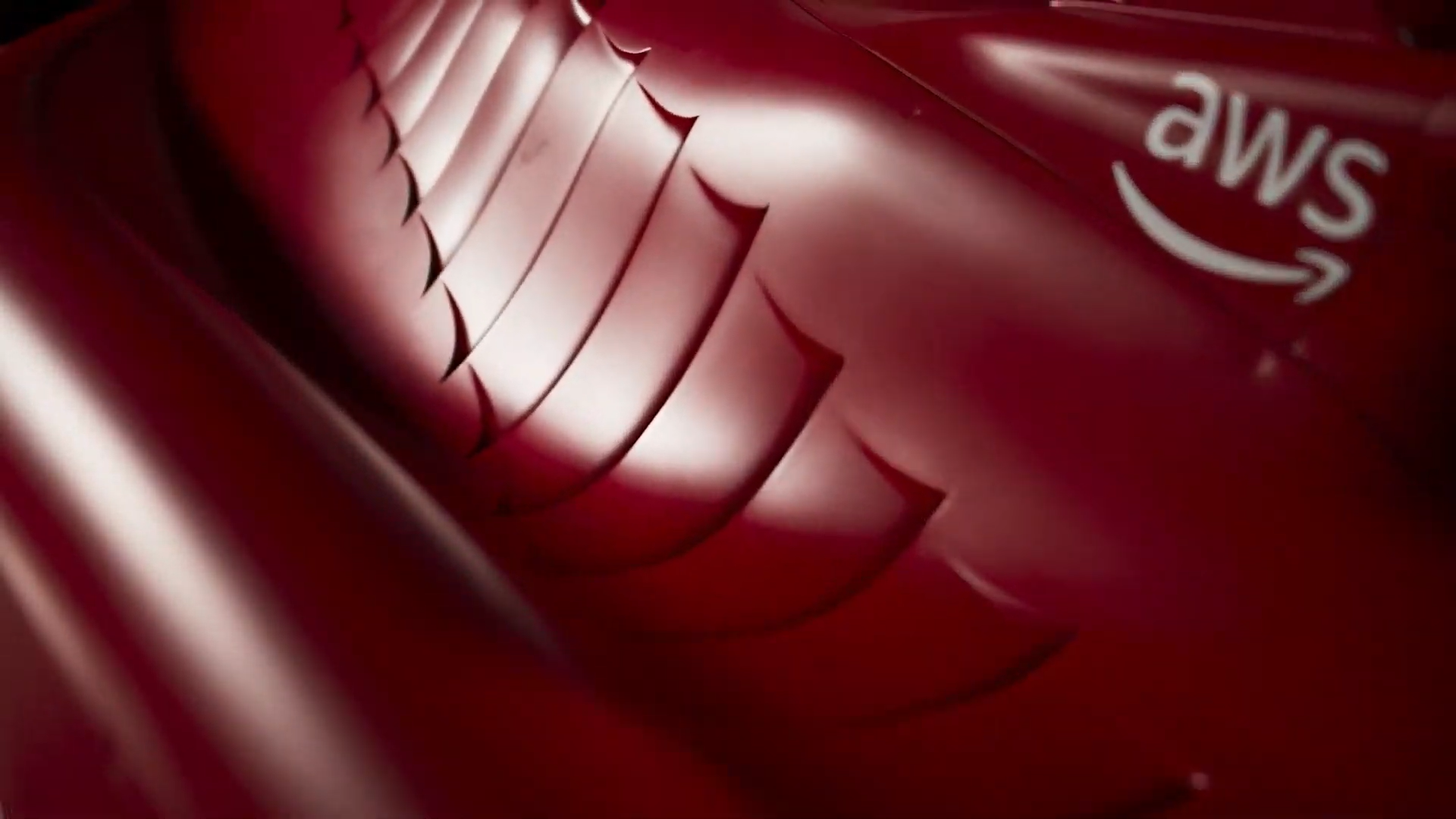
Ferrari has also incorporated louvres in the top surface of the sidepod. This is similar to Aston Martin but the top surface of the sidepod is a very different concept.
It has a ‘valley’ dropping down from the top surface of the front inlet and then effectively flicks out again at the forward leg of the top rear wishbone.
The regulations define that for this section of the bodywork, you must only use a radius of something like 50mm or larger. This is why there is such a large radius on this top outer corner.
But I’m not sure why you would want to sweep it down into this valley. If the louvres were positioned in the bottom of this valley it might just contain that low-energy airflow but they are positioned on the engine cover sides. So this undercut on the top surface will compromise the cooling package underneath the body surfaces as it takes up space. It looks like the radiator is rectangular shaped starting at the highest point at the front of the sidepod and going down to the floor further rearward.
With this very aggressive undercut on the front corner of the leading edge of the sidepod creating a very bluff face and then coming to nothing where the sidepod goes into its very boxy shape, it appears to me that there were two design teams working flat out on each end of the car! And unfortunately, when it was all meant to meet up properly, it didn’t.
Ferrari could be trying to get this front area of the floor to work as an extra little diffuser, scavenging airflow out from under that front corner of the underfloor, but as of yet, there is nothing I can see on the floor to assist with this. It will also generate outwash, which is something the rulemakers didn’t want. It simply appears to be a large, square sidepod with very little undercut leading into the Coke bottle area.
AIRBOX INTAKE
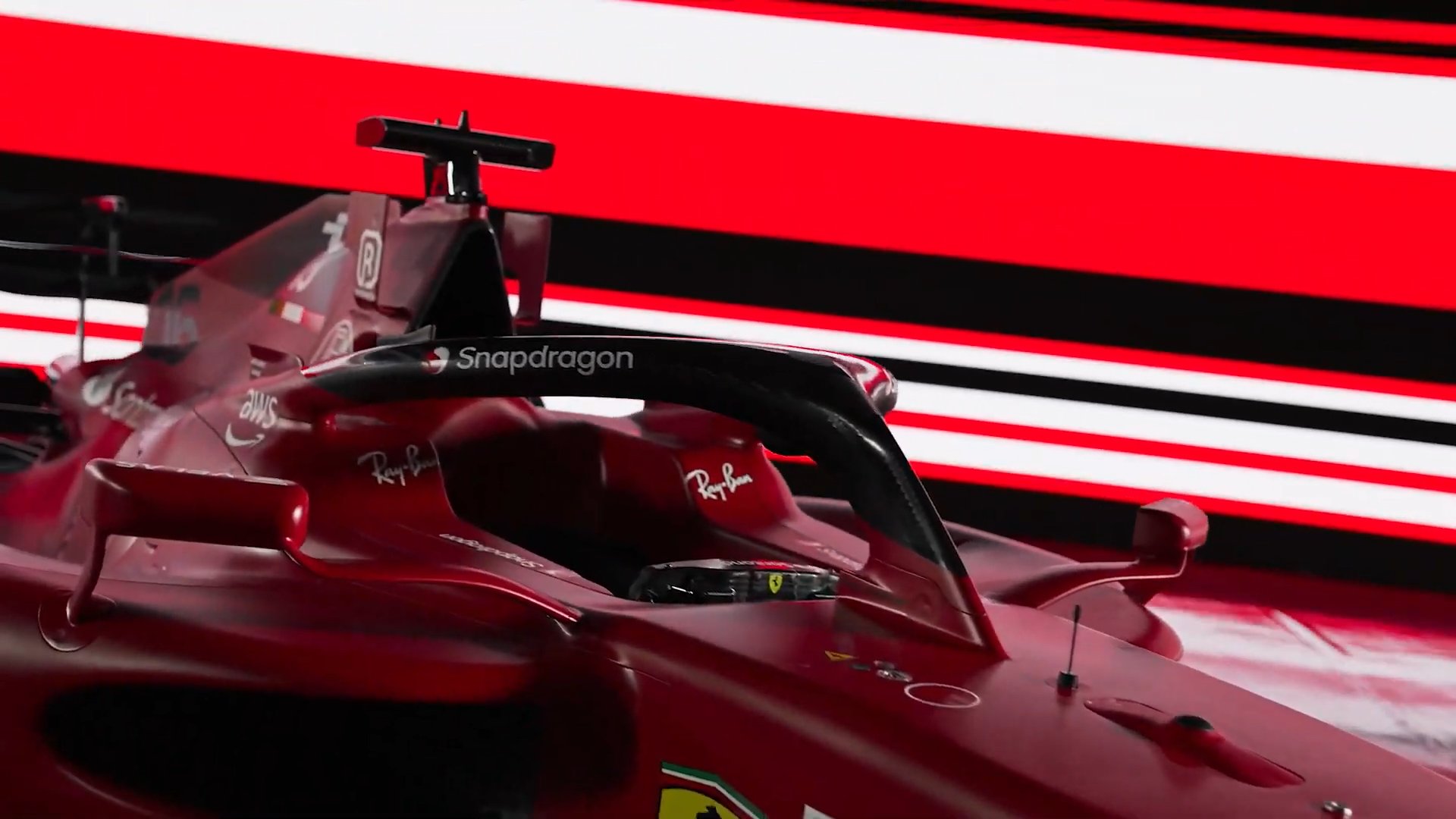
As mentioned earlier, this is small and simply an inlet for the turbo. It is more or less just a covering for the rollover bar.
It is located high up, so this design should be as efficient as you can make it without adding weight for the rollover bar in this area. That means it won’t be detrimental to the height of the centre of gravity.
RADIATOR LOUVRES
These are the main cooling outlet. The cooling airflow will be pulled out through these louvers and will then wash down the body surface into the coke bottle area.
The Ferrari also has an opening at the rear of the sidepods that stops just at the leading edge of the rear tyre. The cooling is all a little confusing – you need high pressure in front of the radiator, low pressure behind the radiator to get the flow through the radiator, and then lower pressure again wherever the exit area is to get the flow from the inside of the body to the outside. This all looks a bit confusing to me.
COKE BOTTLE AREA

This is more of an old-school style Coke bottle. It starts very abruptly with the sidewall undercutting the top area which is open and used as part of the cooling outlet.
It’s not very aggressive. The bodywork simply stops at the front of the rear tyres, so in that respect is a bit like the Williams.
But the front and rear don’t seem to connect for me. It doesn’t look like they follow the same philosophy.
The reason I keep talking about philosophy is that somewhere along the line there has to be some initial unifying vision that leads you to the end result. I just don’t see that in this sidepod concept – or should I say lack of concept?
REAR SUSPENSION
This is a conventional top and bottom wishbone design with the pullrod connected to the outboard end of the top wishbone and the inner end of the pullrod actuating the inner suspension components.
The top wishbone has a fairly wide base. The lower wishbone is different in that it also shrouds the driveshaft in the same fairing. It also has a very rearward forward leg.
This is to minimise the blockage through this area and allow the airflow over the upper diffuser surface to travel as fast as possible.
The rear trackrod is just behind this driveshaft shroud and it could be all one component with shims at the end to adjust the rear toe in/out.
REAR BRAKE DUCTS
From these pictures, we can’t really see anything in detail. With the retardation from the rear of the car mainly coming from the ERS these cars don’t need big rear ducts. I’m pretty sure they will have the conventional inner hub cap fairing that will help control the airflow coming off the front face of the rear tyre and these will then mount the turning vanes that start just behind the rear-wheel centre.
REAR WING
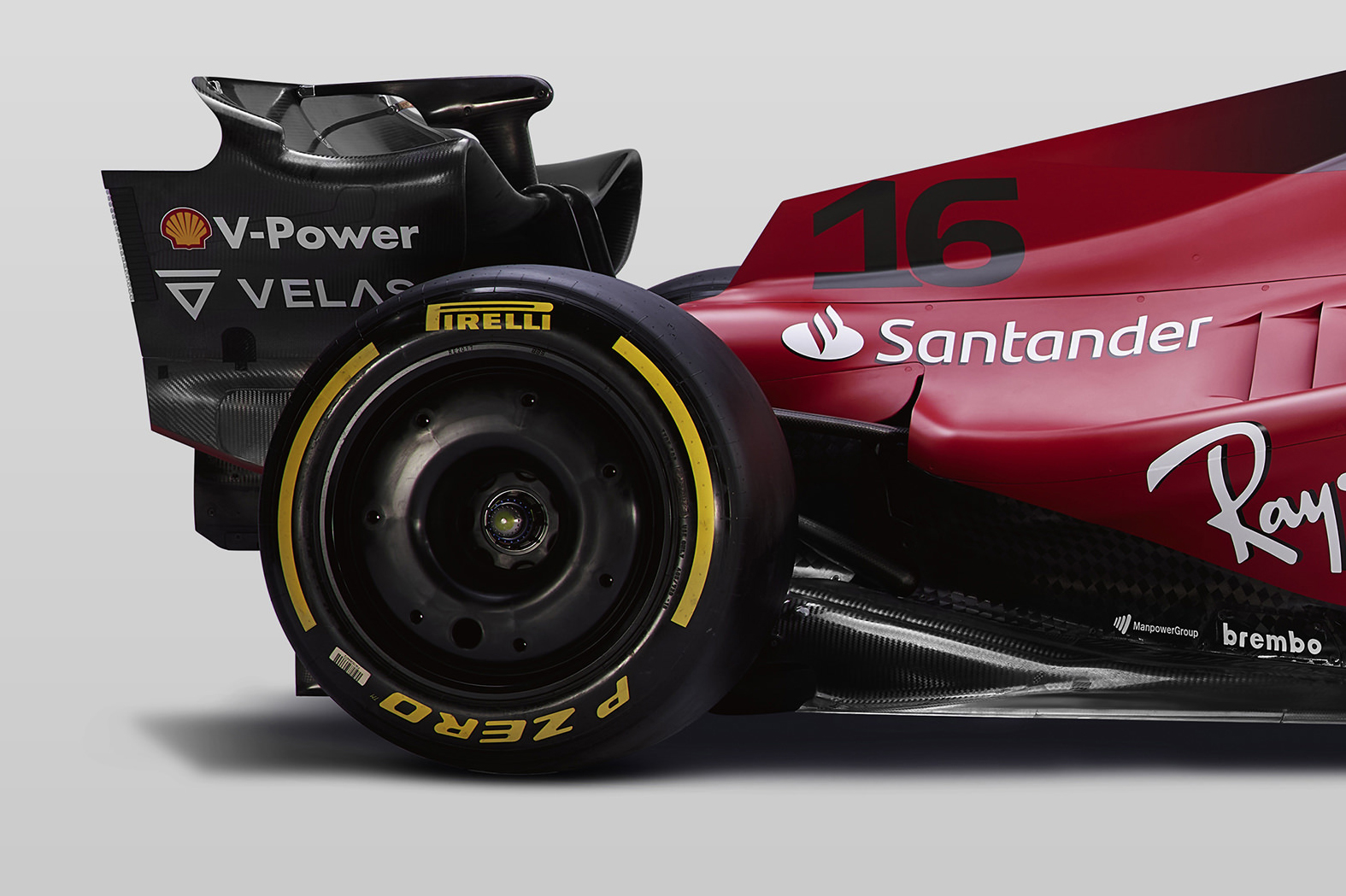
Like much of the rear of the car, this is difficult to see in detail. Although we can at least see more detail than we can of the invisible diffuser.
The actual wing is mounted on twin pillars with a central DRS actuator.
The endplates look a little different from the other teams in how they sweep rearwards from the actual wing elements. But we need to see this in more detail before we can really comment on what they are trying to achieve.
CONCLUSION
I was looking forward to what Ferrari was going to bring to the show, but based on what we’ve been shown so far I’m a bit disappointed. I always talk about the car being one entity from front to rear, the performance comes from the sum of all the bits working together. But I don’t see that in this car.
Yes, there will be changes but it doesn’t look like a potentially race-winning car. Hopefully, I will be proved wrong – and that’s something that has happened on many occasions!
But if this car concept is the real deal, it means everyone else has headed down the wrong avenue and I don’t believe that is likely.


